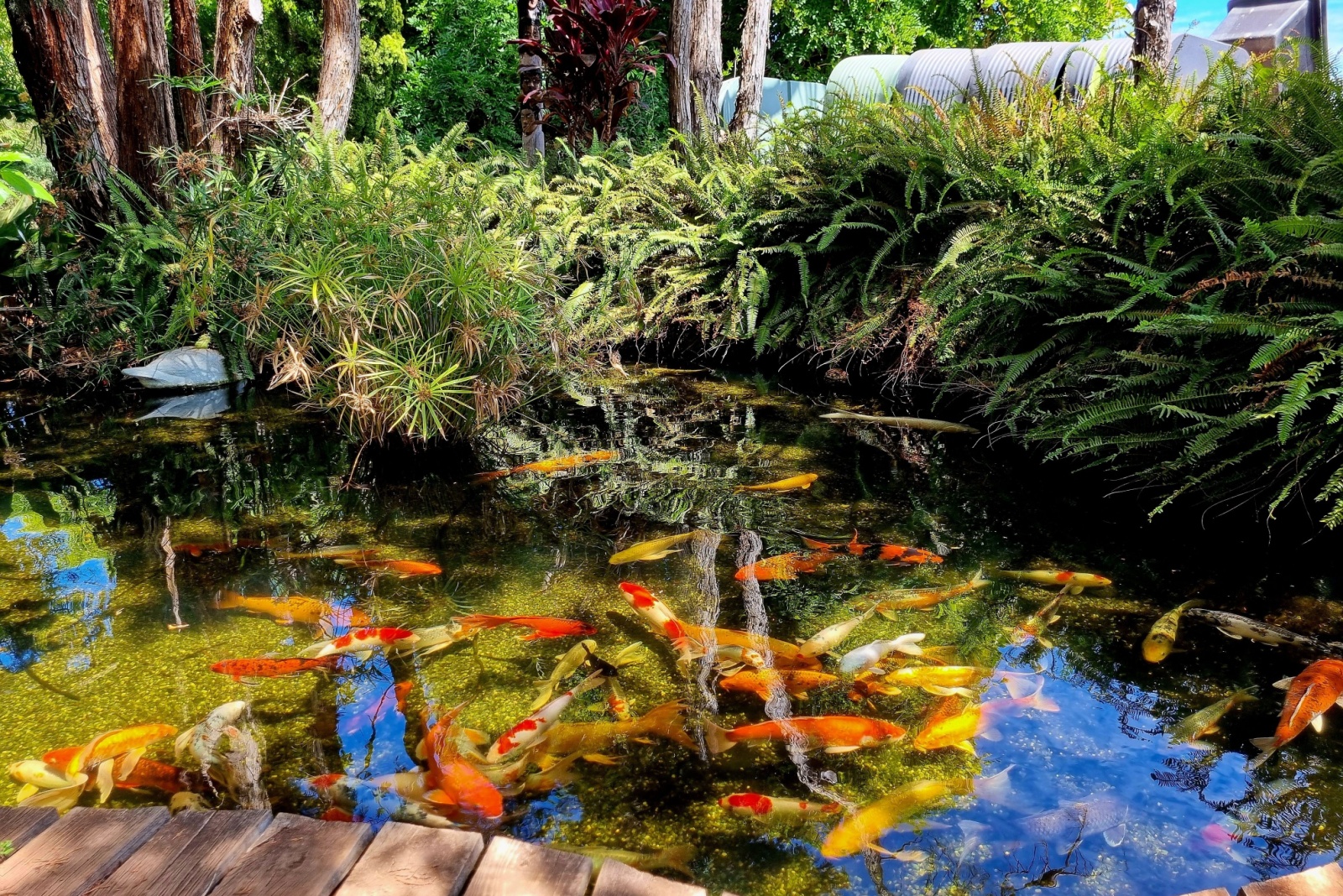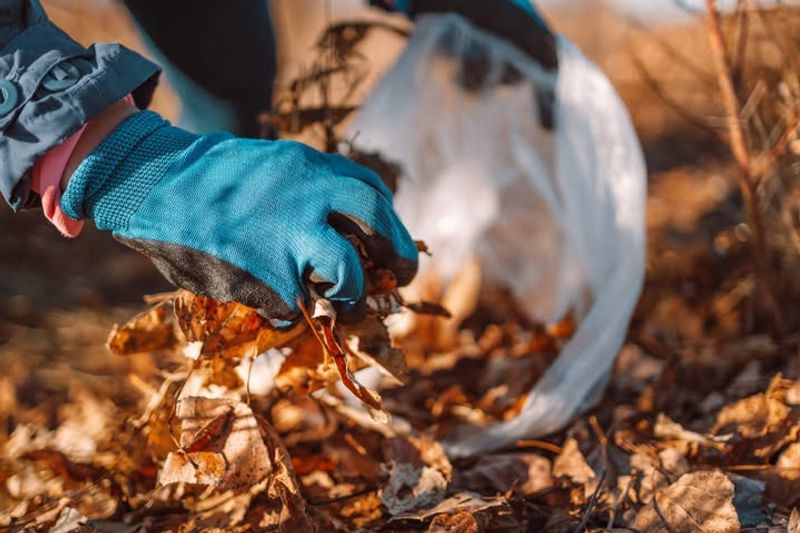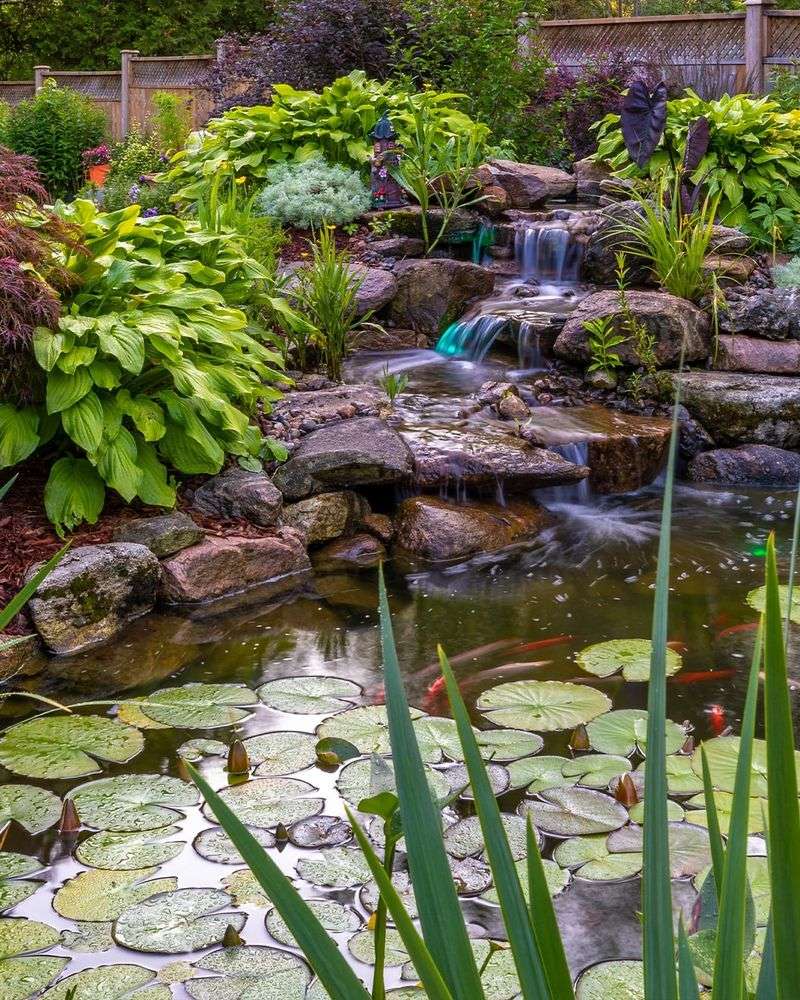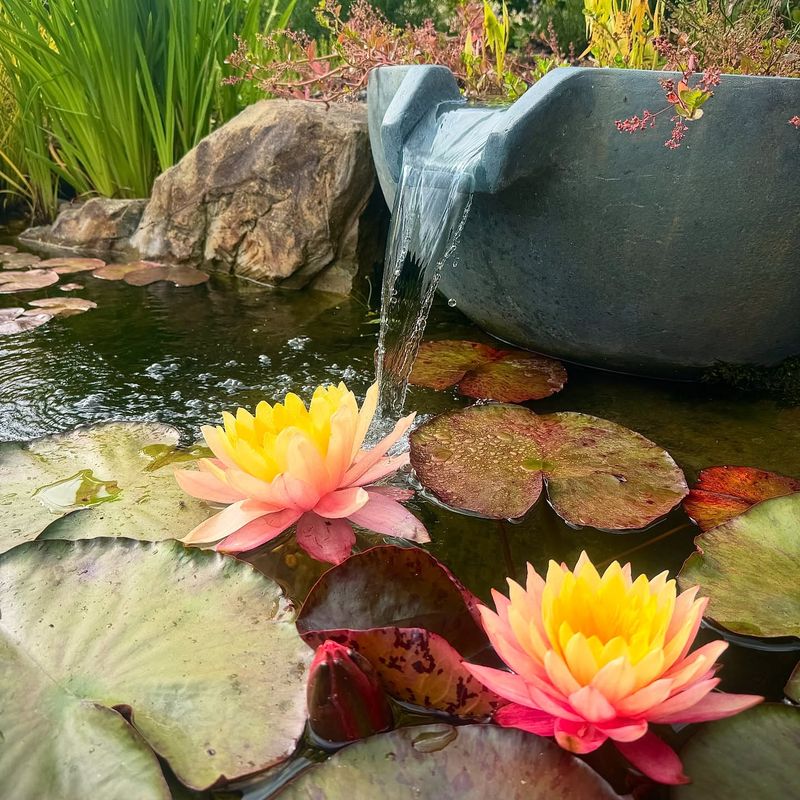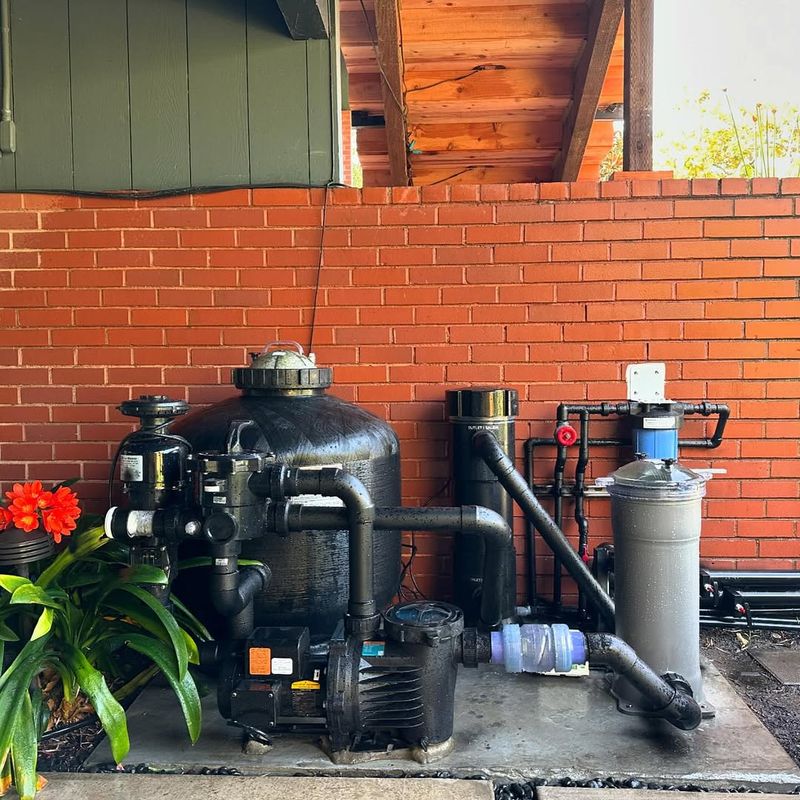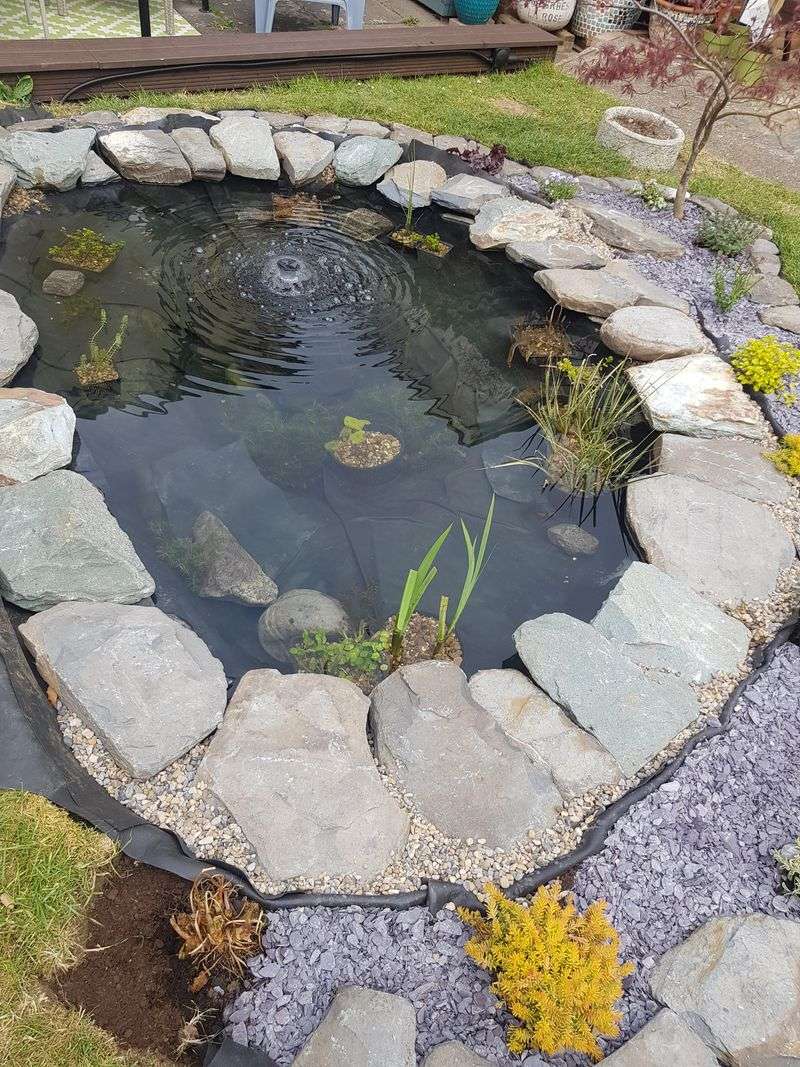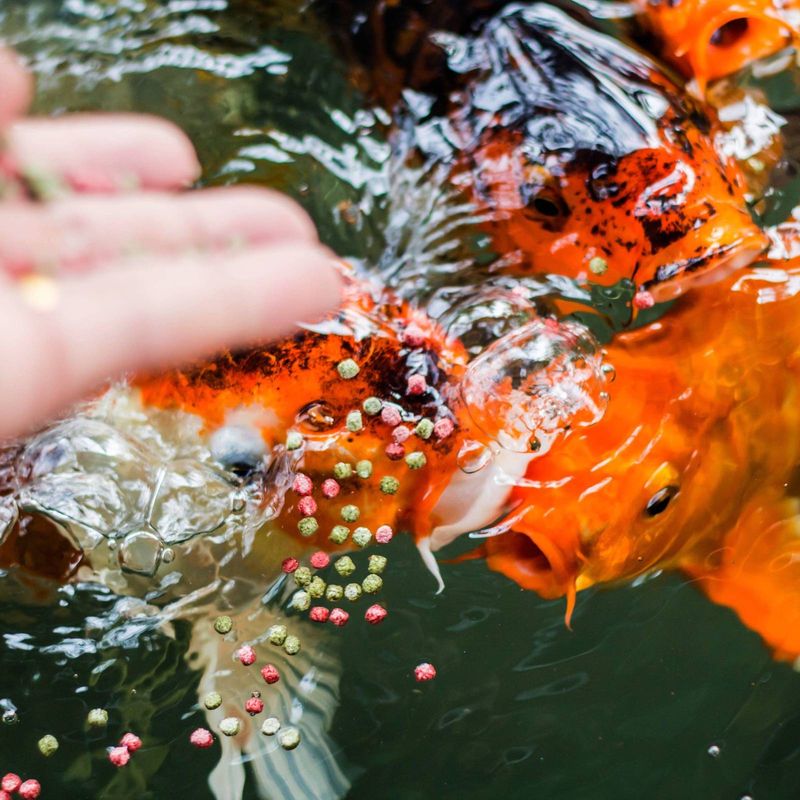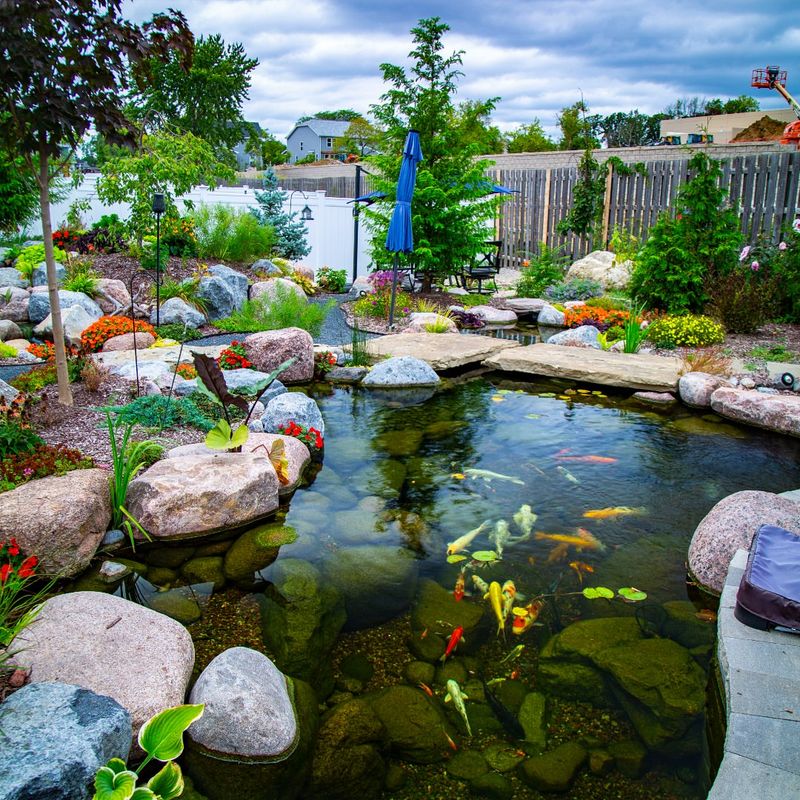Winter in California might be milder than other states, but pond owners still need to prepare for the seasonal changes. Even our Golden State experiences temperature drops, rain patterns, and shorter days that affect pond ecosystems.
Taking care of a few maintenance tasks now will save you headaches and protect your aquatic friends when cooler weather arrives.
1. Clean Out Fallen Leaves And Debris
Fall foliage might look pretty on California trees, but those leaves spell trouble once they sink to the bottom of your pond. Decaying organic matter releases harmful gases and depletes oxygen levels that fish need to survive.
Use a pond net or skimmer to remove leaves, twigs, and other debris that have accumulated. For deeper cleaning, consider partially draining the pond to reach problem areas. Your fish will thank you for preventing the toxic soup that could develop if you skip this crucial step.
2. Test And Balance Water Chemistry
Winter changes can throw your pond’s delicate chemical balance out of whack. Grab a reliable testing kit and check pH, ammonia, and nitrite levels before the temperature drops.
Aim for a pH between 7.0-7.4 for most pond fish. Add appropriate treatments if your readings fall outside the safe range. Balanced water chemistry acts as invisible armor for your fish, protecting them from stress and illness during winter’s challenging conditions.
3. Trim Back Aquatic Plants
Hardy water lilies and other aquatic plants need some pruning before winter arrives in California. Cut back yellowing or dying foliage to prevent excess decomposition in your pond.
Remove tropical varieties completely or bring them indoors if you want them to survive. Healthy plants play a crucial role in maintaining water quality by absorbing nutrients that would otherwise feed algae. Just remember to handle plants gently to avoid stirring up bottom sediment.
4. Check And Clean Filters And Pumps
Your pond’s filtration system works overtime during fall and winter. Pull out filters and give them a thorough rinse with pond water (not tap water, which kills beneficial bacteria).
Inspect pumps for wear and tear, and remove any clogs or buildup. Depending on your climate zone within California, you might need to adjust flow rates or relocate pumps to prevent freezing in northern areas. Many pond owners don’t realize that clean equipment uses less electricity, saving money during winter months.
5. Install A De-icer Or Aerator
Northern California ponds occasionally freeze over in winter. Even a thin layer of ice can trap harmful gases and prevent oxygen exchange, endangering fish below.
A floating de-icer or aerator creates an opening in the ice, allowing gases to escape. You don’t need to keep the entire pond ice-free – just a small hole does the trick. Position your device away from the deepest part where fish gather during cold snaps.
6. Adjust Feeding Schedules For Fish
Fish metabolism slows dramatically as water temperatures drop below 55°F. Switch to a wheat germ-based food specially formulated for cooler water during fall months.
Once temperatures hit 50°F, stop feeding altogether – fish enter a semi-dormant state and can’t properly digest food. Continuing to feed during very cold periods leads to bloating and potentially fatal health issues. Mark your calendar with temperature checkpoints to avoid overfeeding mistakes.
7. Add Beneficial Bacteria Treatments
Cold-water beneficial bacteria help break down organic waste even when temperatures drop. Adding a fall/winter bacteria blend helps maintain biological balance during seasonal transitions.
These microscopic helpers consume leftover fish waste and plant material that would otherwise decay and release toxins. Unlike summer varieties, cold-water bacteria remain active in chillier conditions. Consider this your pond’s invisible clean-up crew that works silently through the winter months.
8. Protect Against Predators
Winter brings hungry predators looking for an easy meal. With fewer leaves on trees, herons, raccoons, and other wildlife can easily spot your valuable fish from above.
Install netting, motion-activated sprinklers, or floating decoys to discourage unwanted visitors. Some California pond owners add floating plants or PVC pipes for fish to hide inside. Remember that winter’s sparse landscape offers less natural protection, making your defensive measures particularly important during this vulnerable season.

